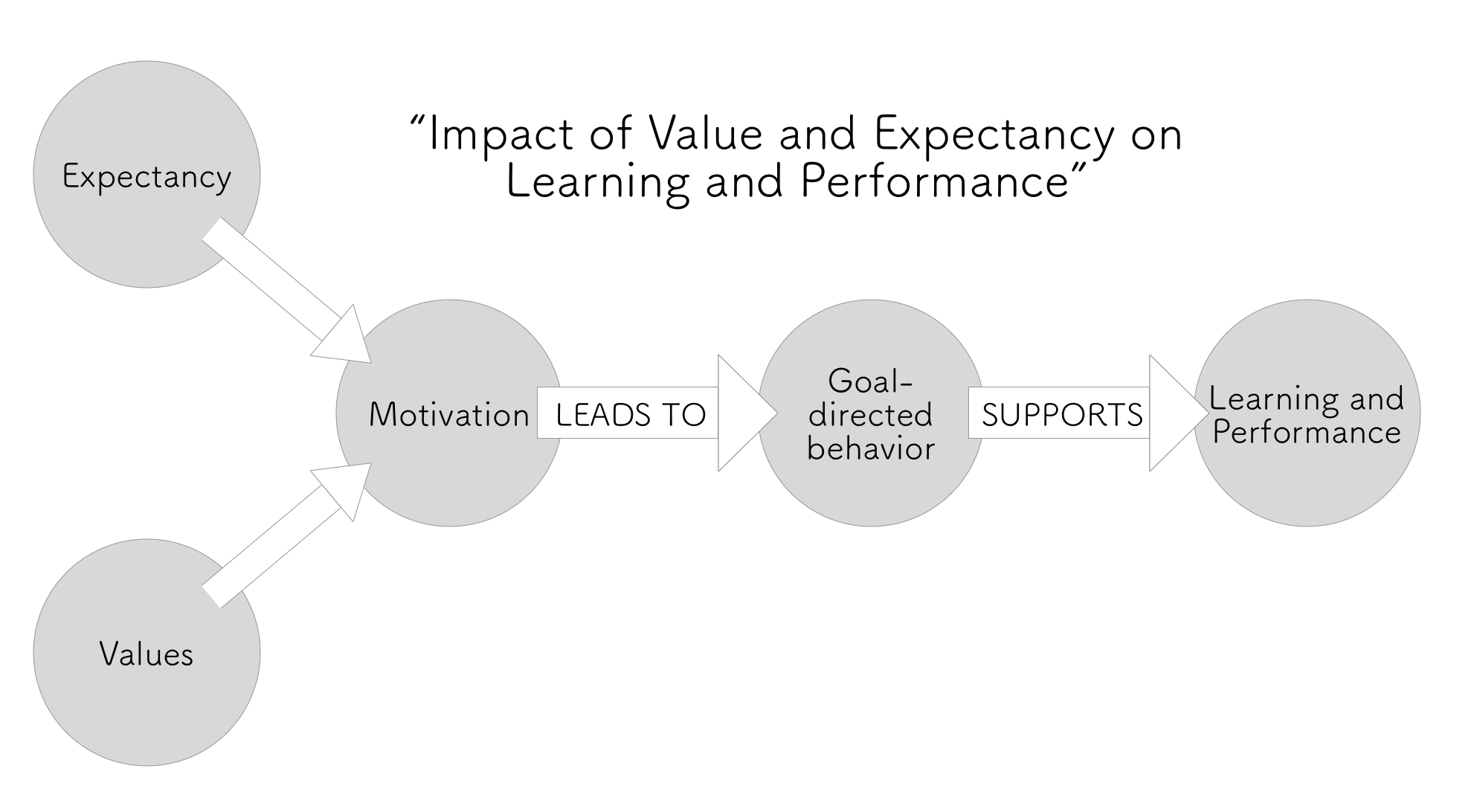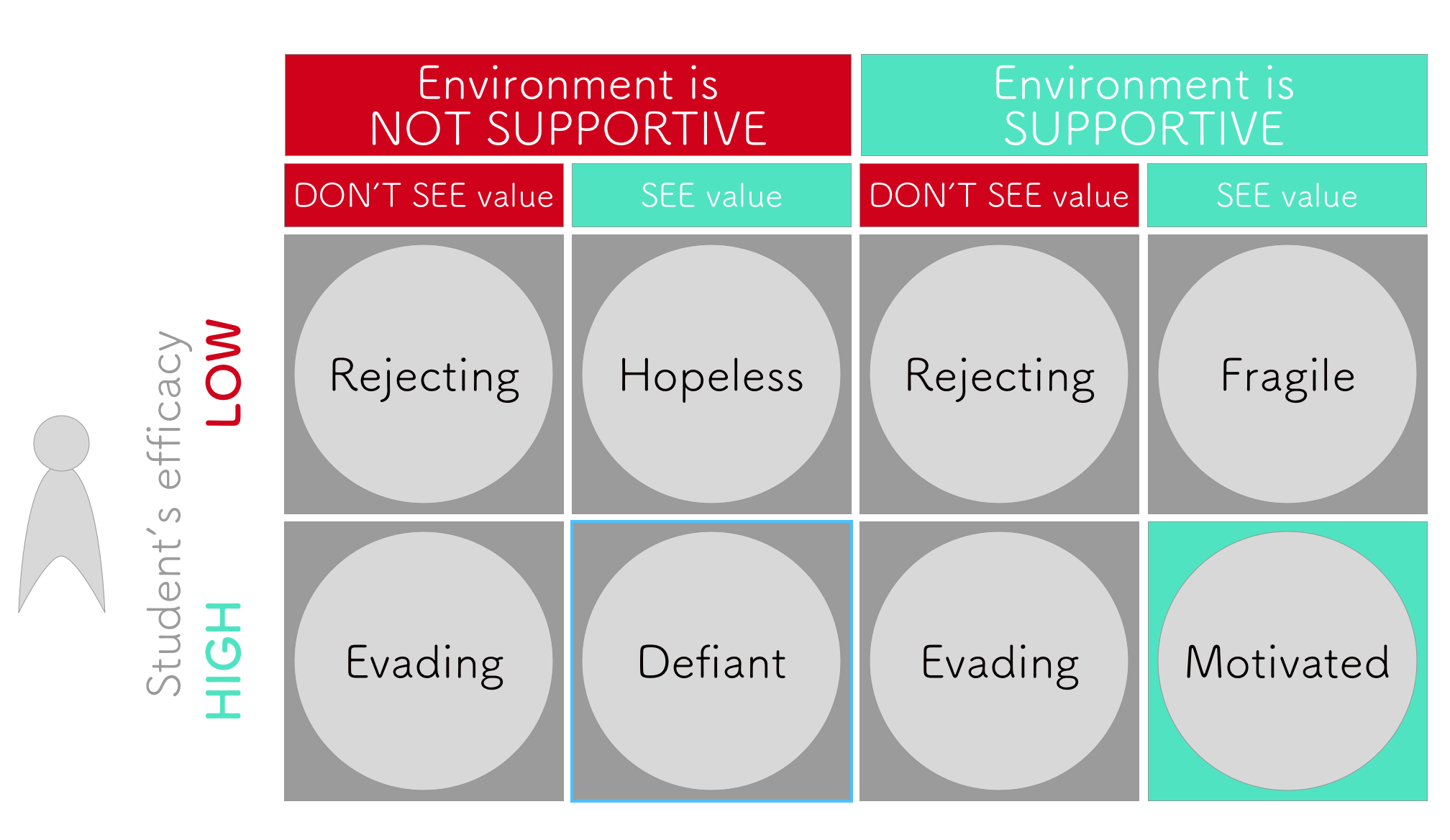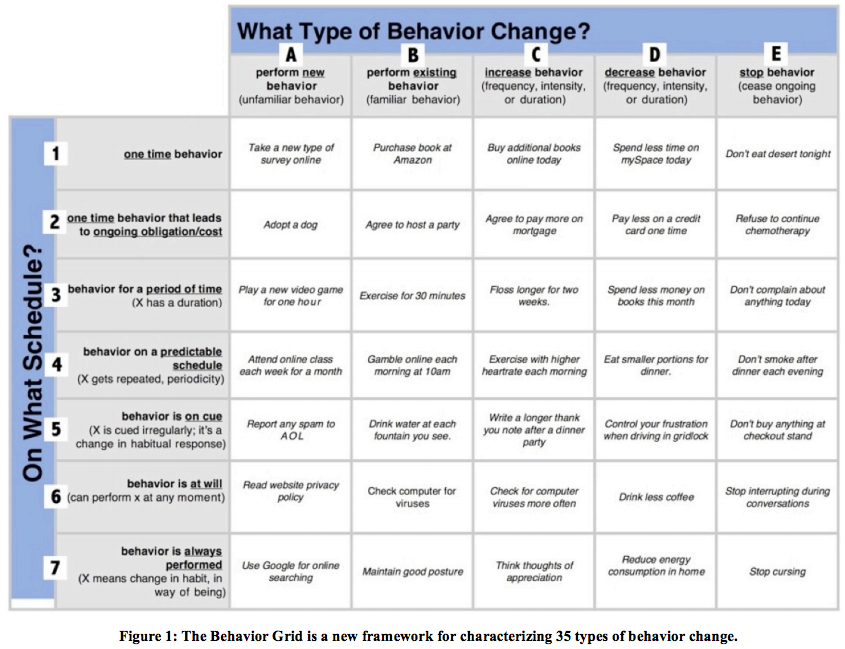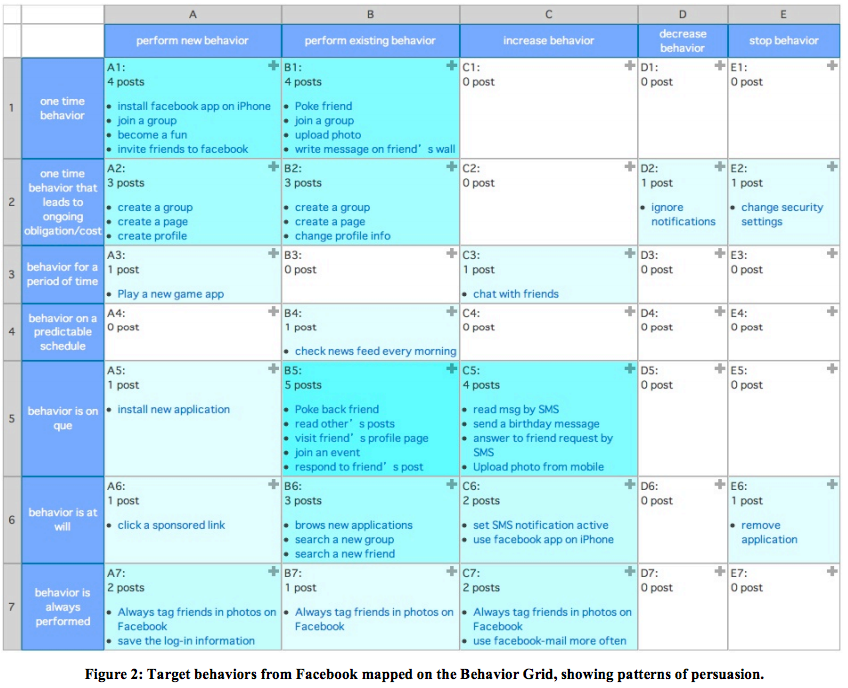Ambrose, 2007, Chapter 3: “What Factors Motivate Students to Learn?”
- Motivation -> towards a goal
- Subjective: values of the goals
- Expectancies: what do you expect out of it

- Goals
- Multiple goals are usually in operation simultaneously
- Conflicting, simultaneous, and even synergic goals – potentially reinforcing
- Performance goals
- “Performance goals involve protecting a desired self-image and projecting a positive reputation and public persona”
- Two kinds
- Performance-approach goals: focus on attaining competence
- Performance-avoidant goals: focus on avoiding incompetence
- Learning goals
- Produce deeper understanding
- Work-avoidant goals
- Finish as fast as possible with minimum effort possible
- Affective goals
- Social goals
- Multiple goals are usually in operation simultaneously
- Values
- Attainment value
- Pleasure of getting there, making it to the next level
- Intrinsic value / motivation
- Do it for the sake of doing it
- Instrumental value
- Extrinsic rewards
- Attainment value
- Expectancies
- Outcome expectancies
- Positive or negative expectation of outcome
- Efficacy expectancies
- Belief of own’s capability of reaching the expected outcome
- Students attribution to success
- More likely to succeed when
- Internal causes (talents, ability)
- Controllable (effort, persistence)
- Less likely to succeed when
- External causes (easy task)
- Uncontrollable causes (luck)
- More likely to succeed when
- Outcome expectancies
- Context / environment
- Supportive environment + values + efficacy expectancies
- “Thus, our framework for understanding motivation suggests that if a goal is valued and expectancies for success are positive and the environment is perceived to be supportive, motivation will be highest.”
- Supportive environment + values + efficacy expectancies

- Strategies
- Establish Value
- Connect material to student’s interests
- Provide authentic, real world tasks
- Show relevance to student’s current academic lives
- Demonstrate the relevance of higher-level skills
- Identify and reward what you value
- Show your own passion and enthusiasm about the discipline
- Positive Expectancies
- Ensure alignment of objectives, assessments, and instructional strategies
- Proper level of challenge
- Early success opportunities
- Articulate expectations
- Provide rubrics
- Targeted feedback
- Be fair
- Educate students about the ways we explain success and failure
- Describe effective strategies
- Provide flexibility and control
- Give students an opportunity to reflect
- Establish Value
BJ Fogg, 2009, “A Behavior Model for Persuasive Design”
- The Fogg Behavior Model (FBM)
- For a person to perform a target behavior they must:
- Be sufficiently motivated
- Have the ability to perform the behavior
- Be triggered to perform the behavior
- For a person to perform a target behavior they must:

- Core Motivators
- Pleasure / Pain
- Hope / Fear
- Social Acceptance / Rejection
- Elements of Simplicity
- Time
- Money
- Physical effort
- Brain cycles
- Social deviance
- Non-routine
- Trigger types
- Spark as a trigger
- Facilitator as a trigger
- Signal as a trigger
BJ Fogg, 2009, “The Behavior Grid: 35 Ways Behavior Can Change”
- Behavior Grid
- How to study and design persuasive technologies
- Horizontal axis
- Types of behavior change
- Vertical axis
- Schedule

